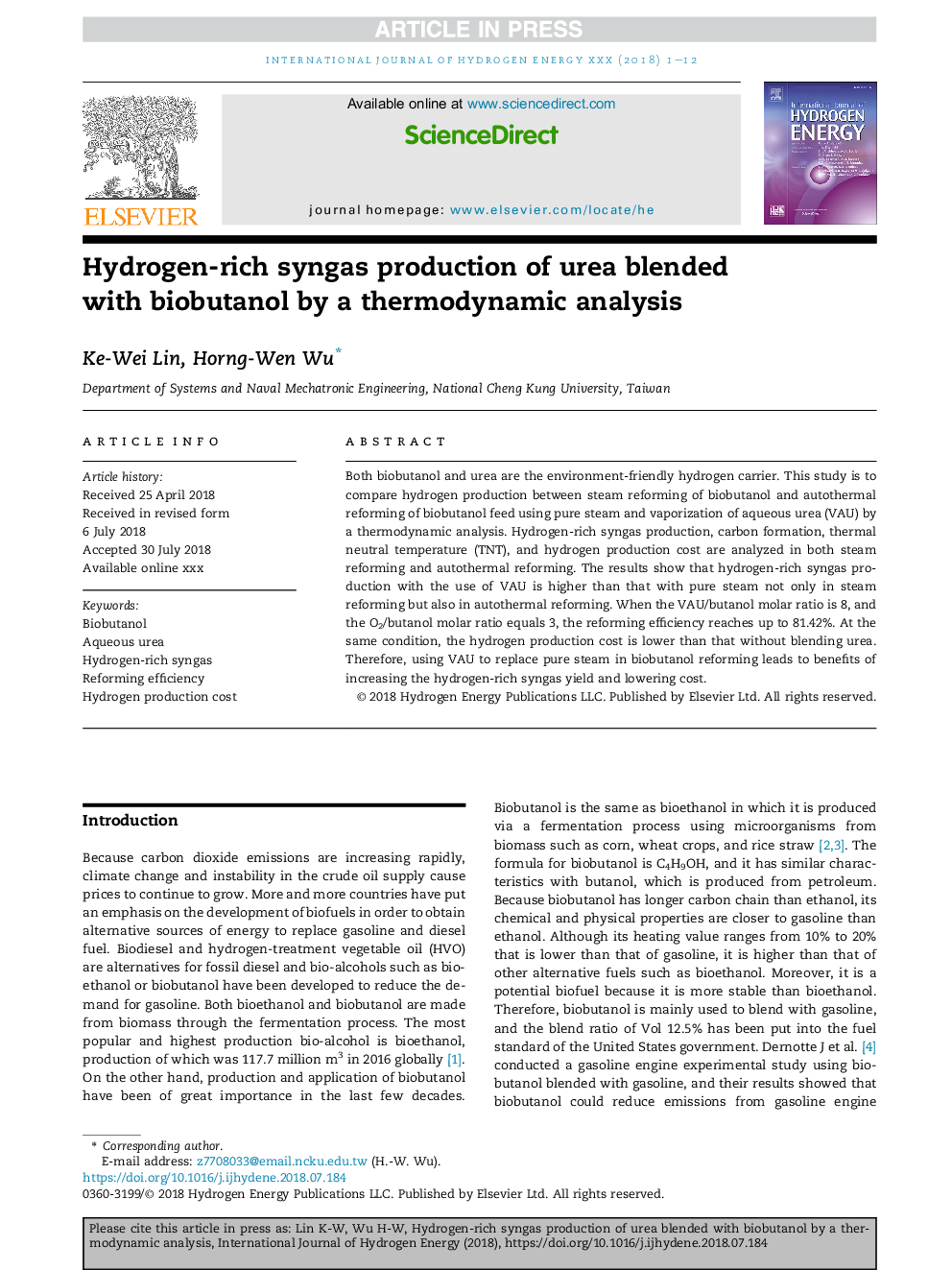| Article ID | Journal | Published Year | Pages | File Type |
|---|---|---|---|---|
| 8954926 | International Journal of Hydrogen Energy | 2018 | 12 Pages |
Abstract
Both biobutanol and urea are the environment-friendly hydrogen carrier. This study is to compare hydrogen production between steam reforming of biobutanol and autothermal reforming of biobutanol feed using pure steam and vaporization of aqueous urea (VAU) by a thermodynamic analysis. Hydrogen-rich syngas production, carbon formation, thermal neutral temperature (TNT), and hydrogen production cost are analyzed in both steam reforming and autothermal reforming. The results show that hydrogen-rich syngas production with the use of VAU is higher than that with pure steam not only in steam reforming but also in autothermal reforming. When the VAU/butanol molar ratio is 8, and the O2/butanol molar ratio equals 3, the reforming efficiency reaches up to 81.42%. At the same condition, the hydrogen production cost is lower than that without blending urea. Therefore, using VAU to replace pure steam in biobutanol reforming leads to benefits of increasing the hydrogen-rich syngas yield and lowering cost.
Related Topics
Physical Sciences and Engineering
Chemistry
Electrochemistry
Authors
Ke-Wei Lin, Horng-Wen Wu,
